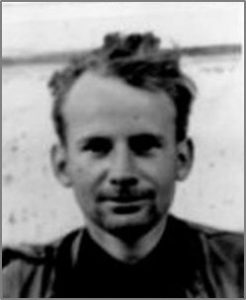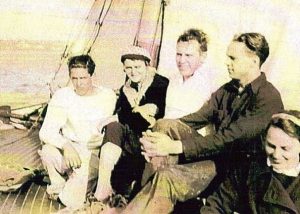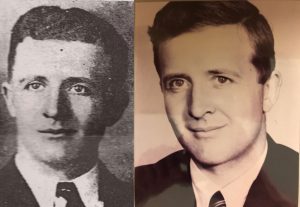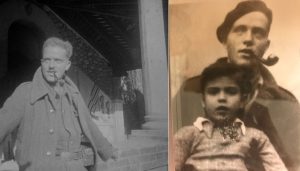Spanish Civil War

History of the Spanish Civil War Monument
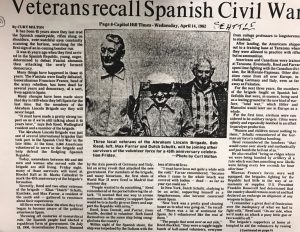 The Spanish War Memorial is located to the West of the HUB, and it was built and dedicated in October, 1998. There were 11 University of Washington students who served in the Spanish Civil War. The construction and dedication of the monument was led by the Veterans of the Abraham Lincoln Brigade and Friends in Washington. The 11 UW veterans were honored, in addition to the other 40,000 volunteers from over 50 different countries, who fought for the Spanish people in the US’s first clash against fascism (Roseth).
The Spanish War Memorial is located to the West of the HUB, and it was built and dedicated in October, 1998. There were 11 University of Washington students who served in the Spanish Civil War. The construction and dedication of the monument was led by the Veterans of the Abraham Lincoln Brigade and Friends in Washington. The 11 UW veterans were honored, in addition to the other 40,000 volunteers from over 50 different countries, who fought for the Spanish people in the US’s first clash against fascism (Roseth).
There were about 20 of the brigade veterans at the dedication ceremony, all of which were in their 80s and 90s. Some of the veterans had flown 3,000 miles just to see the recognition for their sacrifice. The artist, David Ryan of Oakland California, has been reached out to, but has not responded. This was the first public memorial in the United States about the Lincoln Brigade’s service, and many of the veterans had tears streaming down their face as they witnessed the dedication (Verhovek). While recognition for the war is extremely uncommon in the US, there are many memorials to their service in Europe; and brigade veterans have even been made honorary citizens of Spain by the Parliament of Spain. As of March 2016, there are no more surviving members of the Abraham Lincoln Brigade (Graham).
 Despite the brigade veteran’s service and sacrifice to fight fascism, almost all the veterans were hounded by the FBI and the rest of America for being “communists”. While some of the veterans did support communism, many were just anti-fascist and extremely liberal. However, during the extreme paranoia of the Cold War, anyone who was considered a Communist was ostracized by the nation. Many of the surviving veterans are not embittered about the scorn they received, some say that positive experiences came out of the ordeal.
Despite the brigade veteran’s service and sacrifice to fight fascism, almost all the veterans were hounded by the FBI and the rest of America for being “communists”. While some of the veterans did support communism, many were just anti-fascist and extremely liberal. However, during the extreme paranoia of the Cold War, anyone who was considered a Communist was ostracized by the nation. Many of the surviving veterans are not embittered about the scorn they received, some say that positive experiences came out of the ordeal.
The 11 UW students that the memorial honors are: Charles Harvey Boyer, Charles P. Clyde, John Hollis Jenkins, Edgar A. Lehmann, Jack Lucid, David Nieder, James Norie, Franklin Plumb, Robert Pettijohn, Robert L. Reed, and Thane Summers. Three out of the eleven volunteers either went MIA or KIA during the war. These students were James Norie, Robert Pettijohn, and Thane Summers. Robert L. Reed’s (AKA Bob Reed) information on other veterans from the war can be found in UW special collections library (University of Washington).
Ten other students were recognized by the University of Washington’s’ 1919 Tyee yearbook for their service in the Spanish American War with the Washington Volunteers. Lieutenant Oliver Hazzard, Lieutenant Walter Cotchett, Sergeant J. Willis Sayre, Sergeant William Reinhart, Corporal Edwin Fredlund, Corporal George Gaches, Corporal Frank Smith, Private Chauncey Rathbun, Private George Page, and John McGlinn were all recognized for their service and bravery.
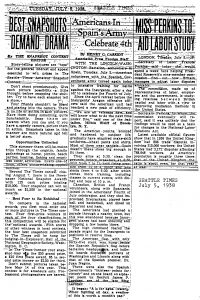 References
References
“Bob Reed Papers”, Special Collections, box 2, folder: “misc photos” (right)
Graham, David A. “The Death of the Last Veteran of the Abraham Lincoln Brigade.” The Atlantic. March 4,
2016. Accessed February 09, 2017.
Roseth, Bob. “Monument to Spanish Civil War volunteers to be dedicated Oct. 14.” UW Today. September
09, 1998. Accessed February 09, 2017.
University of Washington. Tyee 1919 Yearbook. University of Washington Junior Class 1900-1912 and
Associated Students of the University of Washington 1912-late 1960s, 1994. University of Washington
Libraries, Seattle, Washington.
Verhovek, Sam Howe. “Seattle Journal; 60 Years After Spain, Lincoln Brigade is Honored.” The New York
Times. October 16, 1998. Accessed February 13, 2017.
The Life Behind the Memorial

Learn about each of the service members represented on the Spanish Civil War monument and those they honored.
Lt. Hazzard enlisted as a corporal in Company M of the First Washington Volunteers. He served in the Spanish American War and the Philippine Insurrection. When his regiment returned to the United States he re-enlisted as a first lieutenant into the 11th Cavalry (“Bob Reed Papers”).
Lt. Cotchett entered the University of Washington in 1894, four years later he enlisted as a sergeant and was later commissioned as a second lieutenant. He took charge of Company G a year later and subsequently fought in Santa Ana, Guadeloupe, Taguig and Laguna Bay, and led his men to take Calamba. In San Mateo Lt. Cotchett was injured with a bullet through the leg, but survived the injury.
Sgt. Sayre began his time at the University of Washington in 1897, but left shortly after to enlist in the Army as a sergeant. He fought in Santa Ana, Guadaloupe, Pateros, San Pedro Macati, and Taguig.
Sgt. Reinhart entered the university of Washington in 1897 but stayed for only a year, leaving to enlist as a corporal. He fought in Santa Ana, Guadaloupe, Pasig, Pateros, Taguig, Laguna Bay, Tay Tay, Morong, and San Pedro Macati. He retired as a sergeant returning to the University of Washington to finish his education (“Bob Reed Papers”).
Cpl. Fredlund began schooling at the University of Washington in 1897 and later enlisted into Company G of the Washington Volunteers. He participated in the same engagements as Sgt. Sayre, though he was attached to the regimental signal corps.
Cpl. Gaches began at the University of Washington in fall of 1896. Soon after, he enlisted as a private into Company B of the Washington Volunteers. He was appointed a regimental scout and received a special mention for bravery.
Cpl. Smith started at the University of Washington in 1895 and three years later he left to enlist in the same company as Cpl. Gaches. Later that year he was promoted to corporal (“Bob Reed Papers”).
Pvt. Rathbun entered the University of Washington in 1896 enlisting in Company B of the Washington Volunteers. He fought in Santa Ana, Guadeloupe, San Pedro Macati, Pasig and Tauguig. He was made a regimental scout and subsequently received mentions for bravery and sharpshooting. He returned home and continued at the University of Washington in the class of 1902.
Pvt. Page began at the University of Washington in 1895, two year later he left to enlist in Company D. He participated in engagements in Santa Ana, Guadeloupe, Pateros, Pasig, Laguna de Bay, Tay Tay, Morong, San Pedro Macati, and Taguig. He was hospitalized for an illness contracted in the trenched but recovered and returned to his studies at the University of Washington (“Bob Reed Papers”).
